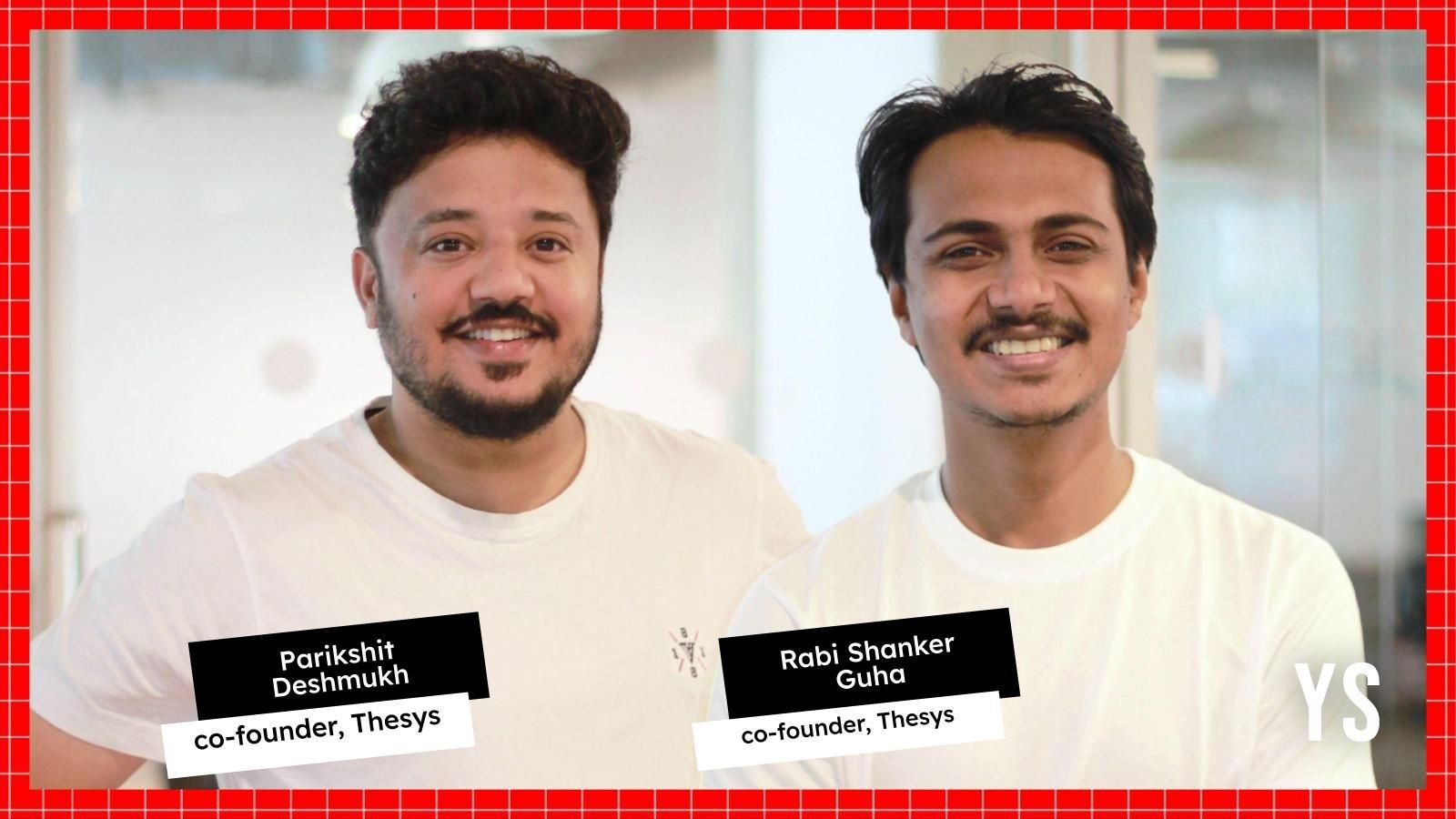Startup
Immersed in sound: The future of consumer happiness

Immersive audio is a multi-dimensional approach to creating soundscapes that envelop listeners with a life-like experience where sound is perceived as coming from all around. For example, if a scene features a helicopter flying overhead, the listener will hear the sound moving from behind, passing above, and continuing to the front.
Now, imagine the same sound effect without visuals. It’ll take you to another world—the world of imagination. Technologies like spatial audio, binaural sound, and surround sound systems are used heavily nowadays to craft three-dimensional auditory environments that ensure a more real-life-like experience. The sense of realism, in turn, creates an unparalleled level of engagement.
Truth is, immersive audio has changed the entertainment industry—from movies to television shows, online streaming, audio-only music, and non-music platforms. Today, every whisper, explosion or musical note feels like real life. Such soundscapes simply envelop the audience, and make the viewing (and listening) experience more intense, turning them into active participants who are emotionally involved with the story.
From theatres to homes
Immersive audio is not restricted to movie theatres anymore. Headphones, today, are mostly designed for immersive audio experience.
Through interaural time difference (ITD) technology, headphones send sound to one ear slightly earlier than the other if the sound source is closer to one side of the head. With the intensity level difference (ILD), an acoustic shadow is created to make sound less loud in one ear than the other which is supposedly far away from the sound source. Besides, the shape of the ear affects how sound is received above 1,000 Hz which helps our brain to determine direction and distance.

Why should brands use immersive audio?
Immersive audio can enhance engagement for any brand if it is used properly for communications and commercials. Sound evokes emotions, making us recall memories which, in turn, could potentially influence behaviour by impacting the emotional state.
Emotional experiences always leave a lasting impact, which is more likely to be retained by our brains. Naturally, commercials and branded content, backed by immersive audio, are a no-brainer for brands to create a bond with their consumers.
Immersive audio is becoming a must-use technology for companies not just in the entertainment industry but across automobiles, education, healthcare, gaming, retail and other consumer-facing industries simply because it creates more engaging, interactive and personalised content.
- Richer narrative, better engagement: Brands in the travel industry always show exotic places in their commercials to get eyeballs. Now, imagine the same commercial with the sounds of gentle waves, the chirping of birds and babbles of a stream. The second advertisement gives a sensory preview where the audience is an active participant. That’s simply better engagement which leads to better brand recall and loyalty.
- Experiential marketing: The use of immersive audio helps brands go for experiential marketing. By using immersive audio soundscapes, a sports brand can simulate the atmosphere of a stadium. An automobile brand can easily create a real-life-like atmosphere where a potential customer can experience a drive with the sound of the engine, and ambient noises, for a virtual test drive. The result, undoubtedly, would be rewarding for any brand.
- Demonstration and tutorials: Immersive audio makes product demonstrations and how-to guides more engaging. A speaker brand can only be understood better with a demonstration that gives a sense of every feature. That’s only possible with immersive audio.
- Emotional connection: Brands in wellness and elder care need to connect with their customers emotionally and ensure a feel-good actor. That’s only possible with the simulation of life-like narratives backed by immersive soundscapes. This also helps such brands build longer-term relationships with their customers with emotional connections.
Engagement on-the-go
One of the things that has emerged lately is non-music on-the-go entertainment, which is primarily dominated by audio series, or episodic audio drama. Here, the role of immersive audio is undeniable.
Audio series are like television series or web series minus the visuals. Immersive audio creates life-like atmospheres that take the listeners into a world of imagination where they craft the characters and scenes as per their creative psyche. Without immersive audio, this would fall flat.
It’s just the start
To be sure, the true potential of immersive audio is still unfolding. The auditory experiences created with immersive audio will get sophisticated with time as technology advances and evolves.
At the same time, consumer expectations will grow for more engaging, interactive and personalised content. Naturally, digital storytelling will have to go through more transformation to meet consumer expectations.
Immersive audio will be the key differentiating factor for brands to create a competitive edge.
(Suyog Gothi is Head of India Business at Pocket FM.)
(Disclaimer: The views and opinions expressed in this article are those of the author and do not necessarily reflect the views of YourStory.)
Startup
Thesys secures $4M funding led by Together Fund

AI startup Thesys bags $4 million funding in a round led by Together Fund. The round also saw participation from 8VC, the company said in a statement.
The startup will use the funding to bridge the gap of user experience with AI agents. As a visual collaboration tool, the company will also provide a platform that will enable businesses to ideate, visualise, and ship intelligent experiences at scale.
“The way we engage with technology is changing faster than ever. Static interfaces simply don’t meet the demands of today’s AI-capabilities…At Thesys, we’re building tools that make it possible for businesses to adapt and thrive in this new era,” said Parikshit Deshmukh, Co-founder, Thesys.
This evolution is about unlocking the full potential of AI-driven interactions and delivering unparalleled user experiences, he added.
“The future of AI relies as much on intuitive, adaptive interfaces as it does on backend capabilities. Thesys’ vision for Generative UI aligns perfectly with Together Fund’s commitment to enabling founders who are redefining the user experience,” said Manav Garg, Co-founder and managing partner of Together Fund.
“By empowering teams to create real-time, personalized interactions, Thesys is setting a new standard for AI-driven interfaces. We’re excited to support their journey in transforming the role of design and development tools for the next generation of AI applications,” he added.
The company, founded by Rabi Shanker Guha and Parikshit Deshmukh this year, emerged from the understanding of the need to provide support in the shift towards AI-driven interfaces, it said.
“Thesys envisions a future where all interfaces dynamically adjust to each user’s behavior, preferences, and needs—driven by what the company calls “Generative UI”. Unlike traditional static interfaces that rely on predefined paths, Generative UI uses AI to create unique, adaptive user interfaces on-the-fly, allowing businesses to provide truly personalized digital experiences,” the company added.
The company plans to launch a UI SDK that is set to enable developers to seamlessly integrate Generative UI into their applications. Additionally, post its closed beta launch, the company plans a general availability (GA) with its product within the next quarter positioning itself as the go-to product toolkit for businesses looking to stay ahead in the AI revolution.
“Thesys is pioneering a transformative shift in UI design workflows by integrating AI-driven adaptability… Their Generative UI approach aligns with our commitment to investing in technologies that drive innovation in user experiences,” said Bhaskar Ghosh, partner at 8VC.
Startup
BrowserStack launches AI-driven Low Code Automation tool

Software testing platform has rolled out Low Code Automation, a solution to simplify test automation for quality assurance teams, developers, and non-technical users.
The newly launched solution will address challenges faced by software teams, including manual testing delays and complex automation frameworks, BrowserStack said in a statement.
While traditional test automation requires coding expertise by often limiting non-technical testers to contribute, this tool allows user—irrespective of their technical background—to create and manage AI-driven automated tests without writing code. Users can also use BrowserStack’s cloud infrastructure for reliable test execution.
“(The AI-powered Low-Code Automation (LCA) simplifies the process of building and maintaining test automation suites compared to traditional tools like Selenium. It reduces the steep learning curve and complexity often associated with automation projects, leading to a quicker return on investment (ROI),” Chintan Doshi, Director of Product Management at BrowserStack, told YourStory.
To support development teams worldwide, Low Code Automation speeds up testing cycles, boosts product quality, and enhances user experience by reducing technical barriers.
“Citizen testers—such as business analysts, product managers, and customer support teams—can easily add validations and create automated tests with the test recorder, without requiring coding skills. This reduces their dependency on developers and QAs and empowers them to actively contribute to testing efforts,” Doshi explained.
Founded in 2011 by Ritesh Arora and Nakul Aggarwal, BrowserStack provides a cloud-based platform for developers to test websites and mobile apps across devices, operating systems, and browsers on demand.
With headquarters in San Francisco and Mumbai, the company has expanded its product line to include over 15 products, of which 10 were launched in the past 18 months.
In August, the Accel-backed firm acquired Berlin-based Bird Eats Bug, an advanced bug-reporting tool. The acquisition aims to address the existing gaps in bug reporting and streamline fragmented testing workflows.
Startup
Flipkart’s delivery arm Instakart reports widening losses, lower revenue in FY24

Flipkart’s delivery service arm Instakart’s FY24 losses increased multifold to Rs 1718.4 crore, from Rs 324.6 crore in the previous year, hurt by higher expenses and marginally lower revenues.
The company, which is in the logistics, warehouse, courier and allied services business, clocked an operating revenue of Rs 12,115.3 crore in FY24, 5% lower than Rs 12,787.4 crore it posted a year ago, according to filings made with Toefler.
During the period, the company’s total expenses increased 6% to Rs 14,149.4 crore, mainly driven by employee benefit and other expenses.
Logistics services accounted for the majority (about 78%) of Instakart’s total operating revenues, with Rs 9,429.8 crore, marginally lower than what it collected in the previous year.
Warehousing services, which accounted for about 10% of total operating revenues, witnessed a 28.4% drop in revenue, while collection services, which accounted for 12%, remained stable.
Just a week ago, Flipkart Internet reported a 21% rise in FY24 revenue at Rs 17,907.3 crore helped by rising income from its advertising services.
Flipkart India Ltd, which is Flipkart’s business-to-business (B2B) arm, reported a 26.4% rise in revenue from operations at Rs 70,541.9 crore in FY24.
-

 Startup Stories1 year ago
Startup Stories1 year agoWhy Millennials, GenZs Are Riding The Investment Tech Wave In India
-

 Startup Stories1 year ago
Startup Stories1 year agoStartups That Caught Our Eyes In September 2023
-

 Startup Stories1 year ago
Startup Stories1 year agoHow Raaho Is Using Tech To Transform India’s Fragmented Commercial Trucking
-

 Startup Stories12 months ago
Startup Stories12 months agoMeet The 10 Indian Startup Gems In The Indian Jewellery Industry’s Crown
-

 Crptocurrency8 months ago
Crptocurrency8 months agoLither is Making Crypto Safe, Fun, and Profitable for Everyone!
-

 Startup Stories1 year ago
Startup Stories1 year agoHow Volt Money Is Unlocking The Value Of Mutual Funds With Secured Lending
-

 Startup Stories1 year ago
Startup Stories1 year agoWhy Moscow-Based Kladana Considers Indian SME Sector As The Next Big Market For Cloud Computing
-

 E-commerce1 year ago
E-commerce1 year agoTop Online Couponing Trends To Watch Out For In 2016




